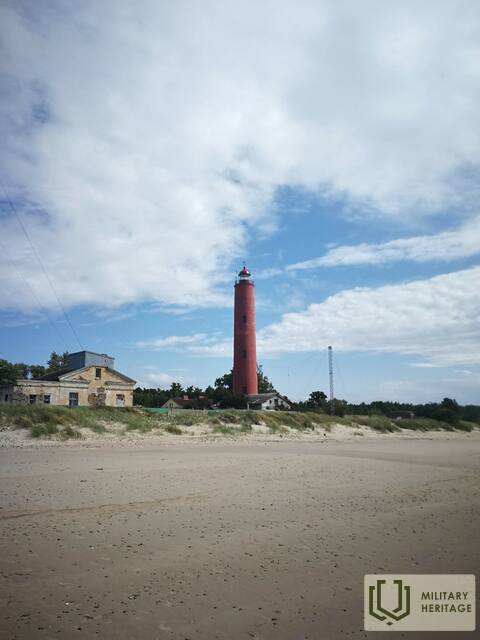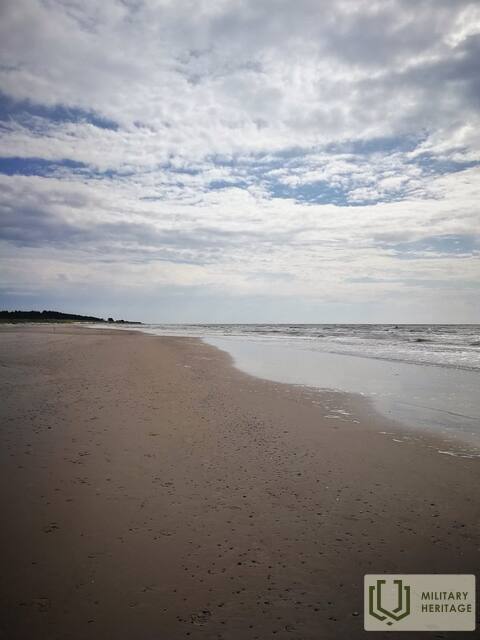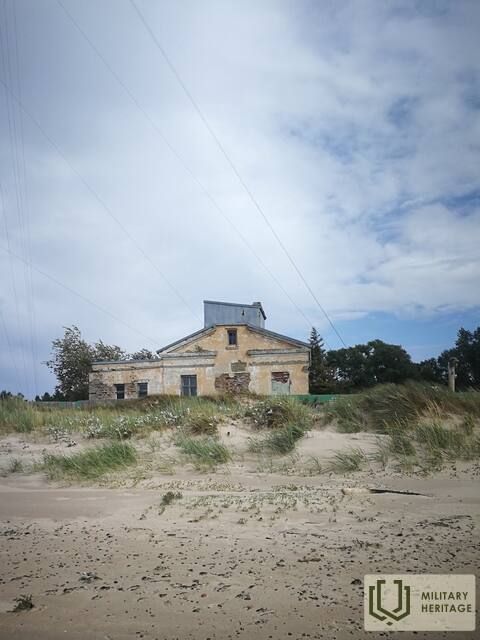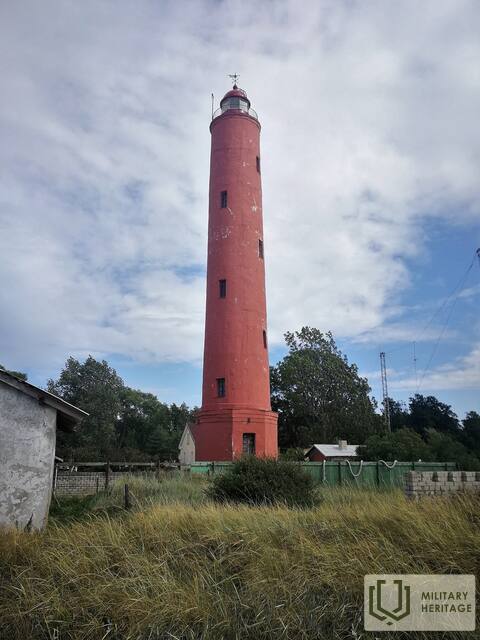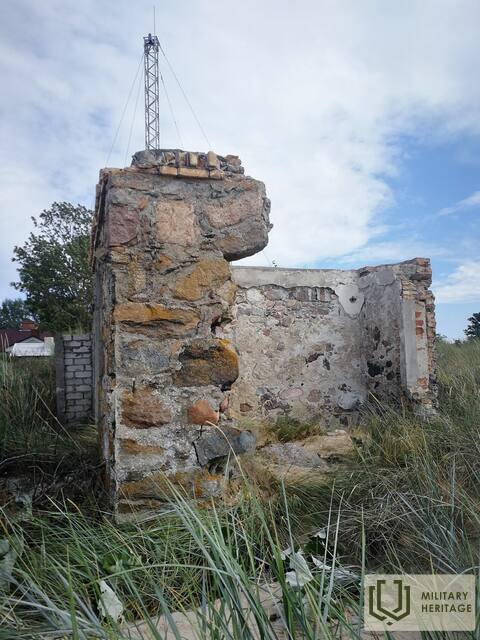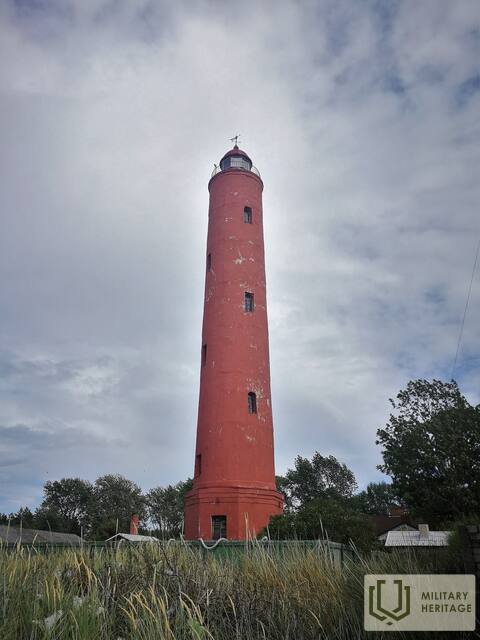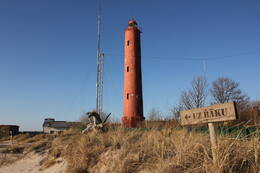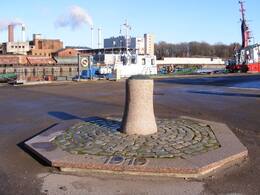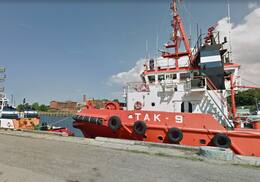Akmeņrags Lighthouse and Shoal - one of the largest ship graveyards in the Baltic Sea
It was in the Akmensrags lighthouse area that, on January 13, 1923, the steamer Saratov , on which the provisional government led by K. Ulmanis took refuge when the independent state of Latvia was established, tragically ran aground and crashed.
In cases of war and military conflicts in the 19th and 20th centuries, lighthouses were important military and strategic objects that the enemy tried to destroy in order to disrupt or hinder the movement of enemy ships in coastal waters. A similar thing happened with the Akmensrags lighthouse. To protect ships from the treacherous shoals located here, the first navigation light was lit here in 1879, and 10 years later the first 28-meter-high wooden lighthouse was built here. It was destroyed during the First World War, a new lighthouse was built in 1921 and its light is located at a height of 37.5 meters above sea level. This lighthouse still serves today.
Local fishermen and experts also say that here, near Akmensrags, there is one of the largest ship graveyards in the Baltic Sea. It was in the area of the Akmensrags lighthouse that on January 13, 1923, the steamer Saratov , on which the provisional government with K. Ulmanis at the helm took refuge when the independent state of Latvia was established, tragically ran aground and crashed. True, at the time of the accident, the ship was sailing under the red flag, as it had been handed over to the USSR. It was sailing with cargo from Riga to Great Britain, and a stop was planned for it in Liepāja on the way. It was snowing at the time of the accident, and apparently due to poor visibility or a navigational error, the ship ran aground, where the depth was only 5 meters.... The ship's helmsman was shot after returning to the USSR for his mistake, but the ship, which was interfering with fishermen and navigation, was blown up in the 1930s and some of its parts were transported to Liepāja for remelting.... Something remained for the Akmensrags shoal, it did not remain without its share.
Normunds Smaļinskis, 27.10.2009.
www.diggers.lv, www.necton.lv
Related timeline
Related topics
Related objects
Akmeņrags Lighthouse and the fate of the "Saratov"
The Akmeņrags Lighthouse is located in Saka parish, 10 kilometres southwest of Pāvilosta. The top of the lighthouse can be reached by a spiral staircase and it offers views of the sea and the surrounding forests. Standing at 37 metres high, the current lighthouse tower was built in 1921, while the previous lighthouse was destroyed during World War I.
The Akmeņrags Lighthouse stands out among other lighthouses in Latvia, as it is located in one of the most dangerous places for sailing in the entire Baltic Sea coast. The signal beam of the lighthouse marks a rocky bank, which extends approximately two nautical miles or 3.7 kilometres into the sea in a north-western direction. The depth of the bank is just over two metres. The location of the lighthouse has remained unchanged, but the coastline has been receding over the years. Although a navigation light has been here since 1879, Akmeņrags has seen several shipwrecks. The most notable occurred in September 1923 when a Latvian steamer named Saratow struck the ground. In 1919, Saratow briefly served as the seat of the Latvian Provisional Government. Akmeņrags used to be home to a border guard post, and buildings of the Soviet Army are can be viewed here.
Berth of the ship "Saratov" in Liepaja
The berth of the "Saratov" is located in Liepaja, at 59 Old Harbour, near the boat docks.
Built in 1888 in Copenhagen by the shipyard Buvmeistar & Wain under the name "Leopold II", in 1911 it was bought by the joint-stock company Russian North-West Shipping and renamed "Saratov", with the Latvian Aleksandrs Remess becoming the ship's captain.
In May 1915, when Liepaja was occupied by German troops, the Saratov was in a damaged state in the harbour.
On 10 January 1919, the steamship Saratov was taken over by the Latvian Provisional Government. From April to July 1919, after the "16 April coup d'état", the Provisional Government headed by K. Ulmanis was on board the Saratov and was forced to take refuge under the protection of the Allied fleet.
On 8 July 1919, after the delivery of the Provisional Government of K. Ulmanis to Riga, the steamers were used for traffic between Riga, Ventspils and Liepaja.
Under the terms of the Peace Treaty of 11 August 1920 between Latvia and Soviet Russia, the steamship Saratov had to be returned to the Soviet side. On 2 January 1923, the steamship was handed over to a Soviet Russian representative. On 15 January 1923, the steamship "Saratov" was wrecked off Akmenrags.
In 1936 the Latvian Maritime Department sold the wreck to a company, which scrapped it and handed it over to the Liepaja Cloth Factory.
The actual berthing location of the ship “Saratov”
The actual berth of the ship “Saratov” is located in Liepāja, at Vecā ostmalā 59 near the boat piers, but the memorial is located in the immediate vicinity of the Liepāja special economic zone.
Built in 1888 in Copenhagen at the shipyard "Buvmeistar & Wain" under the name "Leopold II". In 1911, it was bought by the Russian Northwest Shipping Company and renamed "Saratov", with Latvian Aleksandrs Remess becoming the ship's captain.
In May 1915, when Liepāja was occupied by German troops, the “Saratov” was in the harbor in a damaged condition.
On January 10, 1919, the steamer “Saratov” was taken over for the needs of the Latvian Provisional Government. From April 1919 to July 1919, the Provisional Government led by K. Ulmanis was on board the ship “Saratov” after the “April 16 Coup”, which was forced to seek refuge under the protection of the Allied fleet.
On July 8, 1919, after the Provisional Government of K. Ulmanis was brought to Riga, the steamer was used in traffic between Riga, Ventspils and Liepāja.
According to the terms of the peace treaty between Latvia and Soviet Russia of August 11, 1920, the steamer “Saratov” had to be returned to the Soviet side. On January 2, 1923, the steamer was handed over to the representative of Soviet Russia. On January 15, 1923, the steamer “Saratov” was lost near Akmeņrags.
In 1936, the Latvian Maritime Department sold the shipwreck to a company that raised it and handed it over for scrap metal to the Liepāja Wire Factory.





